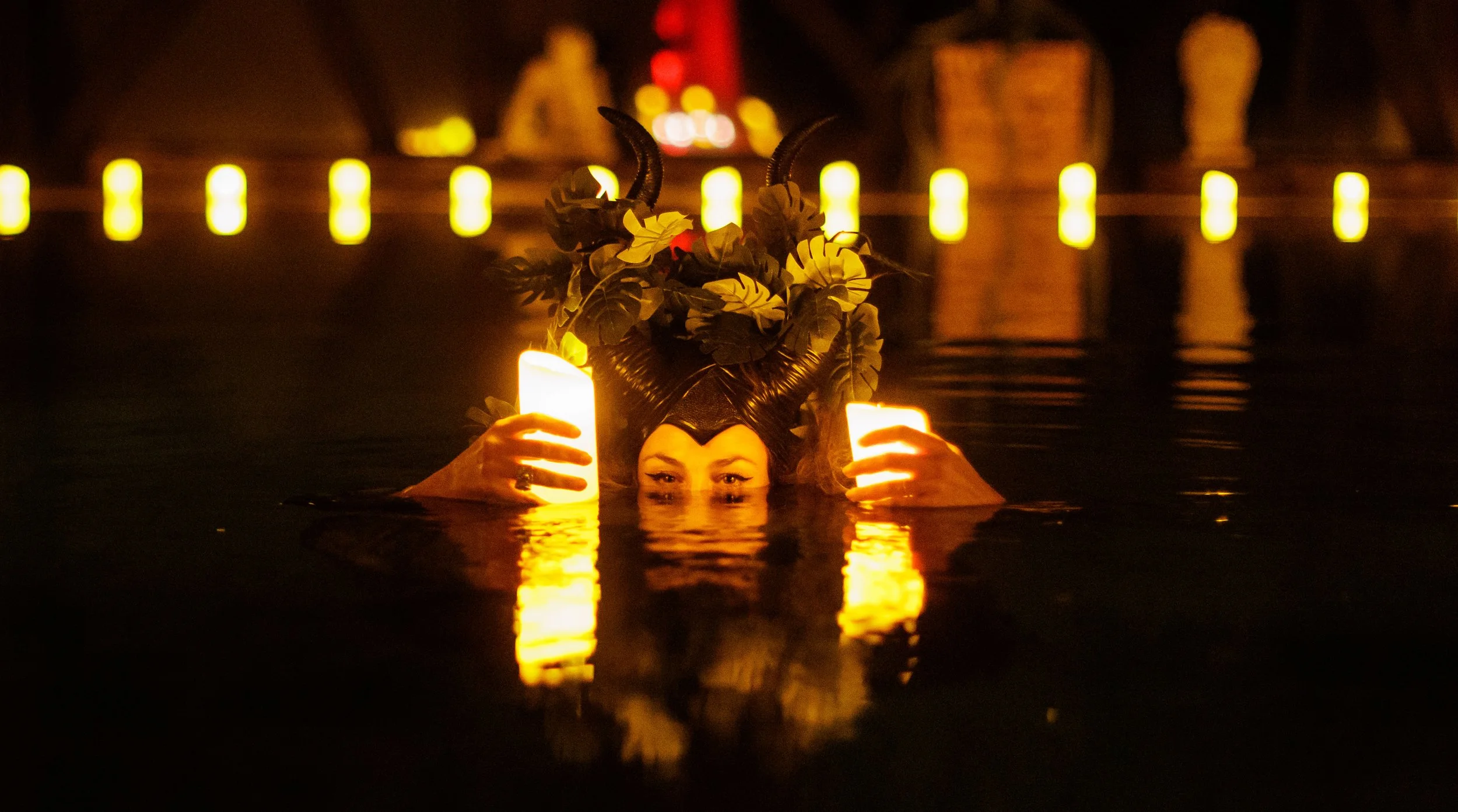How to make your offsites more inclusive
Team culture
How to make your offsites more inclusive
Sara Iannacone · 6/15/2023Inclusive events have the power to bring your team closer, fostering connection and growth. Yet, creating a safe environment can feel challenging. A holistic approach to planning can make all the difference. To help, this post offers resources for creating an inclusive offsite experience to unite, nurture, and empower your team.
Many companies are questioning why their teams aren’t engaged. One factor that could be playing a role? Inclusivity.
Deloitte has found that nearly 85 percent of millennials are actively engaged at work when they believe their work culture is inclusive. Beyond that, Harvard Business Review also discovered that team members who have a stronger sense of belonging and inclusion at work have a 167% higher eNPS score (a score that ranks whether or not they’d recommend their workplace to others), and the companies they work at perform better and have lower turnover.
So, if your business is struggling with low engagement or turnover, one factor could be your company’s approach to inclusion—or lack thereof. And since offsites and events are some of the greatest ways to foster connections within teams, it’s an area worth considering in your efforts to be more inclusive.
Today, we’re sharing tips for how to get started with your inclusive event planning strategy.
Focus on inclusion before you start planning
As event organizers start to plan for an offsite company event, it's important to keep a focus on inclusion from the very beginning. An inclusive event is one where all attendees feel welcome, heard, and valued regardless of their background, identity, or ability.
Inclusion isn't just a buzzword, it's a real strategy that can help organizations achieve their goals and build a stronger team. To prioritize inclusion, take the time to think about how you can make it as inclusive as possible before booking activities, travel, and talking logistics.
Here are just a few ways you can do that:
Take pre-event surveys
One of the best ways to uncover the needs and desires of your team that will help them feel safe at a company event is to do a pre-event planning survey. In this survey, you can ask questions allowing either anonymous responses so employees aren’t afraid to share or transparent individual responses. Either way, actual feedback can then be considered during the planning process.
There are many things you can gain from these surveys, including:
Accessibility requirements for activities and accommodations
Dietary restrictions and requirements
Ideas for programming that cater to diverse populations
Ways you can create a welcoming and respectful environment
Thoughts on how to customize communication materials for greater accessibility and assimilation
Feedback on types of meaningful networking opportunities your team is craving
Improvements suggested from previous event experiences
Collaborate with internal experts
Additionally, your organization may have existing inclusion policies, strategies, and best practices that are shared with C-Suite and manager-level teams but not necessarily with event organizers. So, company event planners can set up meetings with HR teams, DEI teams, employee resource group leaders, etc., to glean information on optimal approaches for inclusion already in play, which can then be infused into the event strategy.
Speak to teammates in groups and one-on-one
Surveys can sometimes be impersonal, and team members may not want to write down their concerns to be “officially recorded.” It’s important to create space for real discussions about any concerns, especially if it’s your first event.
A few ways you can do this are:
Ask managers to have conversations during 1:1 meetings and share feedback with event organizers
Put together a feedback group where individuals can share feedback they’ve received from peers
Have the event organizer open their calendar for 1:1 meetings to discuss concerns and requests prior to the event
Simply facilitate casual conversations between team members to chat about event desires and inclusion efforts
Location, venue, and dining selection
When event planning, choosing venues and vendors that will make accessibility and inclusion easier is key. There are a few ways you can do this:
Consider travel challenges
From that pre-event survey, you will likely receive responses that may uncover things like travel anxiety or disabilities that require accommodation when traveling. These challenges must be considered when choosing a destination and how those individuals will need to travel. Here are a few things you may want to consider:
Choose your destination wisely
Select a destination that is easily accessible via multiple modalities of transportation (think planes, trains, and automobiles) so team members can decide how they’re most comfortable traveling.
Overcommunicate pre-event
A lot of people’s travel anxiety comes from the unknown. Provide things like corporate travel policies outlining exactly what’s expected while representing the company on travel, as well as extensive accessible travel information to team members. This may include items like directions to the event venue, recommended transportation options, and any specific travel considerations or challenges they may encounter. This helps team members plan their journey according to their own unique needs.
Create your agenda intentionally
When creating your company event agenda, consider factors such as travel distances and potential delays to allow team members enough time to reach the venue comfortably. Avoid tight schedules that may put undue pressure on participants and lead to exclusion or inconvenience or long distances between activities that may not have widely accessible transportation options.
Book accessible lodging
Not all corporate event lodging is created equal. For lodging to be accessible, you want to make sure it checks multiple boxes, including:
Physical accessibility: Ramps, elevators, wide doorways, accessible parking, maneuverable spaces, accessible bathrooms, and lower bed heights
Visual accessibility: Adequate lighting, signage, and visual aids
Hearing accessibility: Visual doorbells, captioned TVs, communication devices
Communication accessibility: Written information, sign language interpretation, and alternative methods
Accessible amenities: Pools, fitness centers, and restaurants designed for accessibility
LGBTQ+-Friendly: In safe cities, designated by resources like World Rainbow Hotels or clear language on their website, gender-neutral facilities
Policy and training: Inclusive policies, staff training on disability awareness, diversity, and inclusion
Be conscious of dietary needs and restrictions
During any corporate event or retreat, bonding over meals is important. You don’t want anyone to bring stress into a fun mealtime activity because they’re unsure whether food will be safe for their unique dietary needs.
On the pre-event survey, ask for explicit dietary restrictions, allergies, and requirements and review that in-depth with restaurants, venues, and caterers who are helping your event organizers with meals. They’ll be able to work with you to create strategies like custom menu items, place cards with meal choices, table tents on the buffet with allergens in each dish, etc., that will ensure safe consumption for all.
Creating inclusive content
Now, inclusivity doesn’t end in the logistical parts of the event. You also want to ensure your content is inclusive.
Diversity of speakers, facilitators, and formats
Take a look at your agenda and proposed speakers, and ask yourself these questions:
Are diverse perspectives and voices represented?
Are there speakers from different ethnic and cultural backgrounds?
Are there speakers representing diverse gender identities?
How are you ensuring that there are no stereotypes or inappropriate mateiral in the speaker’s content?
Do you offer diverse formats such as interactive sessions, workshops, etc.?
Have you included speakers with disabilities or who advocate for disability rights?
Have you considered speakers from various age groups?
Have you included speakers from different professional backgrounds or industries?
Have you included speakers from underrepresented communities?
Are there speakers who can address topics related to social justice and equality?
Have you considered regional or global diversity in our speaker lineup?
Are there opportunities for emerging or lesser-known speakers to participate?
Now, these questions may vary depending on the purpose or intention of the company event, but it’s a guide to start.
Choose a range of inclusive activities
Not everyone is going to enjoy the same activities. Consider having options for team members and ensuring that not all networking or team-building events at your retreat are mandatory. You can even break up into multiple small groups and provide your team with the choice to select what most appeals to them and what they’re comfortable doing.
Some inclusive event ideas might be:
A relaxed cooking, crafting, or mocktail-making class
An afternoon volunteering in a way that benefits underserved communities who interact with your business
Adapting popular team-building games, such as "Two Truths and a Lie" or "Human Knot," to include elements that celebrate diversity and encourage learning about each other's backgrounds
The key is ensuring that all abilities and restrictions are considered when planning activities. Even if they sound fun to one person, it may be limiting or stressful to another. The power of choice is huge here!
Setting your event up for success
Now that you’ve done all the hard work upfront, here are some of the final elements for success.
Setting expectations early with the whole team
During an opening session, have a leader within your organization set expectations about inclusivity right off the bat.
They can include talking points like:
The importance of fostering a welcoming and respectful environment for everyone
A no-tolerance policy for hateful speech or actions toward anyone
Discussing accessibility issues and accommodations that impact the group as a whole
Sharing a point of contact for concerns on site
The company’s commitment to diversity and inclusion in all areas of the business
This will immediately put the team at ease, creating a trusting environment for a productive and impactful retreat.
Receiving feedback at the event
While many event organizers think about how to gather feedback after a retreat or offsite, it’s less common to think about who individuals can go to on-site—as mentioned above. Since the event organizer will likely be running around and if you don’t have third-party help managing, choosing a manager or leader who will be at the meeting as the point person for fielding any concerns on-site will ensure team members get adequate support.
Since an event manager has to wear so many hats on-site, it’s best that this role is delegated out and then, if necessary, they can address necessary concerns for the event planner to remedy.
Gathering feedback after the event
You want to ensure that all this hard work is analyzed for efficacy. No matter how great you did in terms of inclusivity, there’s likely to be room for improvement, always. So just as the pre-event survey is important, the post-event survey is equally valuable for ongoing inclusivity efforts in your event strategy.
The value of prioritizing inclusion
Inclusive events have the power to bring people together in a way that not much else can. However, achieving inclusivity takes more than good intentions – it takes a thoughtful, strategic approach that you can create by considering the practices above. While the challenges of prioritizing inclusion in your offsite strategy can be daunting, the rewards far outweigh the challenge.
By actively choosing to create an atmosphere of inclusivity at your next offsite, you'll be allowing every attendee to feel valued, heard, and respected. In doing so, you'll not only foster a sense of community but also encourage greater engagement and innovation. Make inclusivity a cornerstone of your event strategy, and watch as the ripple effects of positivity wash over your teams long after the retreat has ended.


















